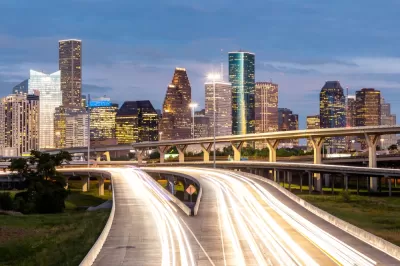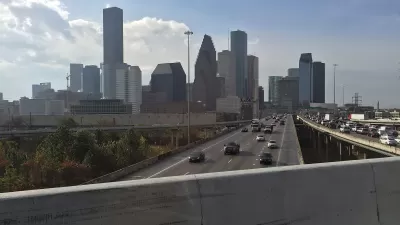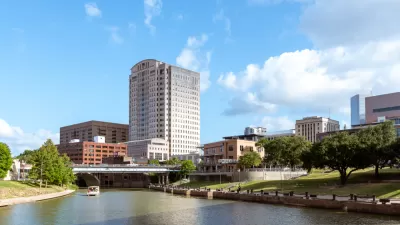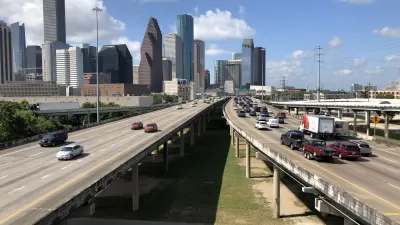A chapter in a new book highlights how highway construction forced changes and caused displacement in communities that included public housing developments.

In an adapted excerpt from Justice and the Interstates: The Racist Truth About Urban Highways published in Next City, Kyle Shelton director of the University of Minnesota Center for Transportation Studies, describes the generational impacts of highway construction on communities and public housing developments in Houston, Texas.
“With every road widening, communities changed. Landscapes shifted. Routes to work and school were blocked. Homes and community institutions were displaced. Although the residents absorbed these impacts for generations, at no point have these Houstonians had the chance to meaningfully shape the highway projects that affect them.”
Shelton details the history of Clayton Homes and Kelly Village, which continue to face environmental hazards and reduced mobility. Yet the Texas Department of Transportation (TxDOT) is plowing ahead with the North Houston Highway Improvement Project (NHHIP), a freeway expansion that threatens to displace hundreds of homes and businesses.
Of course, “This story is repeated across the nation in highway-side communities, most of which are home to low-income and non-white residents. The highways set, in concrete, the course of decades of infrastructure development along with the same, ever-wider rights of way.”
Shelton argues that with many of the country’s major roads and highways aging, now is the time to reevaluate their role in the transportation system. “The choices cities, states, and the federal government make in the coming years can either exacerbate the negative impacts felt by highway-side residents or begin to center alternative approaches and transportation strategies that improve our collective mobility and address the wounds created by past decisions.”
FULL STORY: Houston’s Disruptive History Of Highways, And What Transit Agencies Can Do Better

Alabama: Trump Terminates Settlements for Black Communities Harmed By Raw Sewage
Trump deemed the landmark civil rights agreement “illegal DEI and environmental justice policy.”

Planetizen Federal Action Tracker
A weekly monitor of how Trump’s orders and actions are impacting planners and planning in America.

The 120 Year Old Tiny Home Villages That Sheltered San Francisco’s Earthquake Refugees
More than a century ago, San Francisco mobilized to house thousands of residents displaced by the 1906 earthquake. Could their strategy offer a model for the present?

High-Speed Rail Tracker
Smart Cities Dive follows high-speed rail developments around the country

Ken Jennings Launches Transit Web Series
The Jeopardy champ wants you to ride public transit.

BLM To Rescind Public Lands Rule
The change will downgrade conservation, once again putting federal land at risk for mining and other extractive uses.
Urban Design for Planners 1: Software Tools
This six-course series explores essential urban design concepts using open source software and equips planners with the tools they need to participate fully in the urban design process.
Planning for Universal Design
Learn the tools for implementing Universal Design in planning regulations.
Clanton & Associates, Inc.
Jessamine County Fiscal Court
Institute for Housing and Urban Development Studies (IHS)
City of Grandview
Harvard GSD Executive Education
Toledo-Lucas County Plan Commissions
Salt Lake City
NYU Wagner Graduate School of Public Service





























